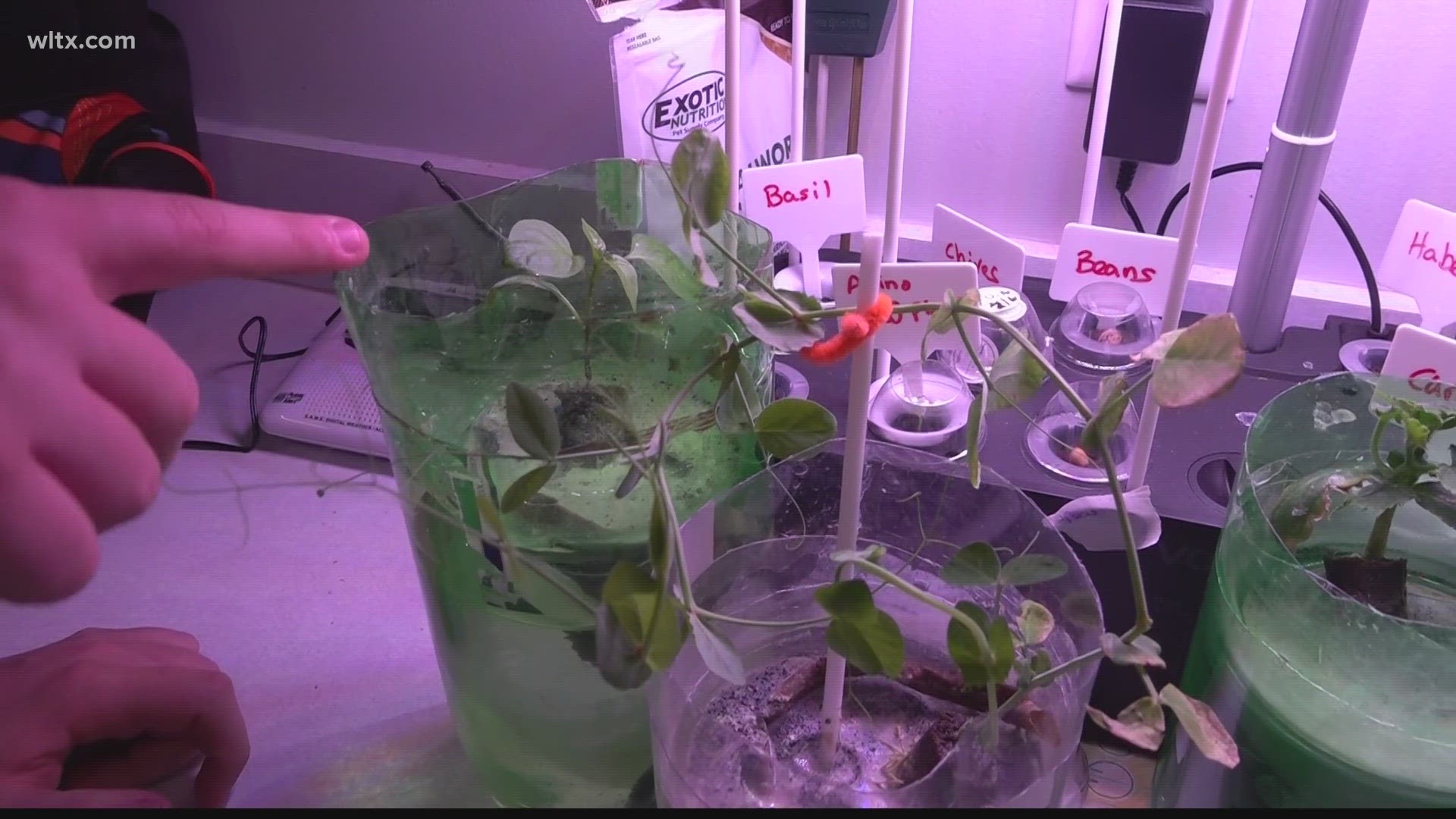COLUMBIA, S.C. — Students at Pace Academy in Columbia have eagerly taken up the challenge to grow plants on the Moon, thanks to the 'Plant The Moon' Challenge.
Armed with a bag of moon rocks, seeds, and water, students at Pace Academy, a school dedicated to youth with dyslexia, are embarking on an extraordinary journey to grow plants in space.
"I love it because we get to see how the plants grow in the environment of outer space," says Haleigh Proulx, one of the participating students, echoing the enthusiasm shared by her peers.
Proulx and her classmate Kinsley Ard are among the seven students who are putting their scientific skills to the test.
"I like plants and I like to theorize what might happen and what does it hold in the future if this succeeds," Ard said.
From cucumbers to purple beans, students have selected a variety of seeds to cultivate under LED lights. Surprisingly, the plants are sprouting faster than anticipated. "I see my plant grow faster once it's transplanted to the moon dust," notes Proulx.
Debbie Bond, a teacher at Pace Academy, emphasizes the educational value of this out-of-this-world experience. "It teaches the students that they can try an experiment. They have to be able to write a lab report, document what they are doing every day with their plants, so it teaches them to be a good scientist," she explains.
Pace Academy proudly represents one of the five schools in the state participating in this NASA challenge.
For students like Ard, this project has opened doors to new possibilities.
"I've always liked science, so this opens my mind to more possibilities," Ard said.
As the students continue their experiment for four more weeks, the results will be shared with NASA scientists, who will evaluate and select the most promising findings.

